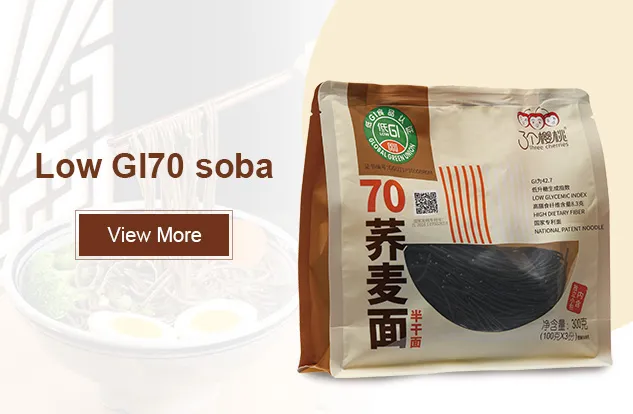Exploring Various Styles of Italian Pasta and Their Unique Characteristics
Different Types of Italian Noodles
Italian cuisine is renowned for its rich and diverse array of pasta shapes and types. Noodles, or pasta, are the cornerstone of many Italian dishes, each bringing its own unique texture and flavor to the table. This article explores the different types of Italian noodles, their characteristics, and how they are typically used in various dishes.
1. Spaghetti
Undoubtedly one of the most iconic types of Italian noodles, spaghetti is long, thin, and cylindrical. Originating from Southern Italy, spaghetti is well-known for its versatility. It pairs beautifully with a variety of sauces, ranging from the classic marinara to a rich carbonara or a simple garlic and oil (aglio e olio). Its long shape allows for twirling around a fork, making it a favorite among pasta lovers.
2. Fettuccine
Fettuccine is a flat, thick noodle that is often associated with Roman cuisine. It is traditionally served with a creamy sauce, the most famous being Fettuccine Alfredo, which combines butter, cream, and Parmesan cheese. Fettuccine is also a perfect match for rich ragùs and meat sauces, as its sturdy shape holds onto the sauce beautifully.
3. Lasagna
Lasagna consists of broad, flat noodles typically used in layered dishes. When baked, the layers of pasta, meat, ricotta cheese, and marinara sauce meld together into a hearty casserole. Lasagna noodles can be fresh or dried, and they can also be found in whole wheat or gluten-free varieties for those looking for alternatives.
4. Penne
Penne is a tube-shaped pasta, cut diagonally at both ends, resembling a quill pen from which it gets its name. It comes in various sizes, such as penne rigate (with ridges) and penne lisce (smooth). The ridges allow sauces to cling better, making penne a popular choice for baked dishes like pasta al forno, as well as creamy sauces and chunky vegetable preparations.
5. Fusilli
different types of italian noodles

Fusilli, with its spiral shape, is another beloved type of Italian noodle. Its unique curves make it ideal for holding onto sauces, particularly pesto and tomato-based sauces. In salads, fusilli retains flavor evenly, making it an excellent choice for cold pasta salads. It’s also great in casseroles or baked dishes, where the spirals trap the sauce.
6. Farfalle
Commonly known as bow-tie pasta, farfalle is distinctive for its shape, resembling a butterfly or bow tie. It is often used in a variety of dishes, including creamy sauces, salads, and soups. The unique shape gives farfalle a fun presentation and makes it popular, especially among children.
7. Ravioli
Ravioli are stuffed pasta pockets that can be filled with a wide array of ingredients, including cheese, meats, and vegetables. They come in different shapes and sizes, and they are typically served with a light sauce to complement the filling. Mushroom or spinach-filled ravioli in a sage butter sauce can make for an elegant meal, while ricotta and spinach ravioli are often enjoyed with marinara.
8. Capellini
Also known as angel hair pasta, capellini is extremely thin and delicate. Its fine texture makes it quick to cook, ideal for lighter sauces or broth-based dishes. A simple dish of capellini with olive oil, garlic, and fresh herbs can be a light yet satisfying meal.
9. Orzo
Although often mistaken for rice due to its small size and shape, orzo is a type of pasta. It is commonly used in soups, salads, and casseroles. Its pasta-like texture complements both hot and cold dishes, absorbing flavors well while providing a substantial bite.
Conclusion
Italian noodles come in a plethora of shapes and sizes, each offering its own unique culinary experience. Understanding the characteristics and best uses for each type not only enhances the cooking process but also contributes to a greater appreciation of Italian cuisine. Whether you prefer a classic spaghetti with marinara or a gourmet ravioli, the variety of Italian noodles ensures that there’s something for everyone to enjoy. So, next time you’re in the mood for pasta, consider exploring the many types Italian cuisine has to offer!
-
Is Whole Wheat Pasta Healthy?NewsMay.30,2025
-
Are Soba Noodles Good for Weight Loss?NewsMay.30,2025
-
Are Buckwheat Soba Noodles Healthy?NewsMay.30,2025
-
Are Buckwheat Soba Noodles Gluten Free?NewsMay.30,2025
-
Are Buckwheat Noodles Good for You?NewsMay.30,2025
-
A Healthy Way to Savor Soba and Spicy FlavorsNewsMay.30,2025
-
What Are Lanzhou Noodles?NewsMay.30,2025
Browse qua the following product new the we

















































































































